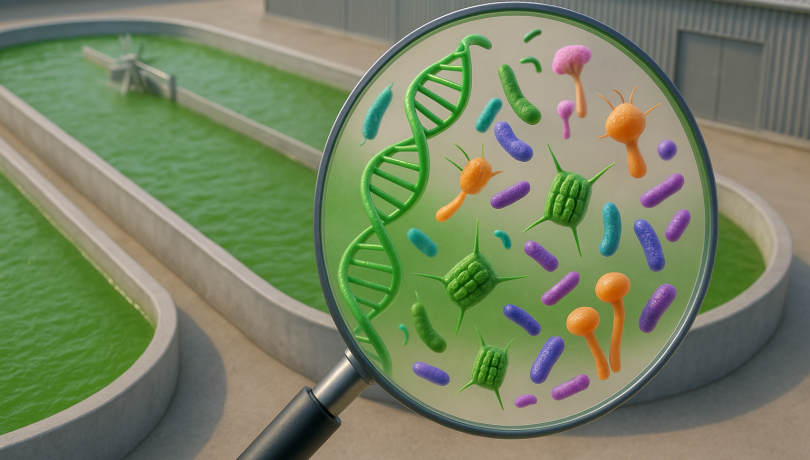Research led by ICM-CSIC paves the way for more efficient and sustainable industrial production systems, including wastewater treatment and green biomass generation.

For the first time, a study led by the Institut de Ciències del Mar (ICM-CSIC) has revealed how microbial diversity associated with microalgae affects their health and productivity in large-scale production reactors. This insight opens the door to more efficient and sustainable industrial systems, particularly in areas such as wastewater treatment and the production of green biomass, a resource from which high value products can be derived. These include lipids for biofuel production, as well as antioxidant, antibacterial, or antiviral compounds for the pharmaceutical and cosmetics industries.
To carry out the study, published recently in Bioresource Technology, the research team closely monitored microbial dynamics over two eight-month periods in two raceway reactors, the most common reactor used in industrial microalgae cultivation, both inoculated with the green microalga Desmodesmus armatus. One reactor was fed with wastewater, while the other used clean water and fertilizers. Sampling was conducted thrice weekly, allowing for a high temporal resolution of microbial community evolution.
Using high-throughput DNA sequencing techniques (metabarcoding), the team identified a wide range of bacteria, fungi, and other organisms coexisting with the cultivated microalga D. armatus, some of which had a beneficial impact, while others a harmful one. Under healthy conditions (where the microalga was dominant) positive associations were observed with beneficial microorganisms such as Geminocystis, Thiocapsa, Ahniella, and Bosea. In contrast, under unfavourable conditions, potential pathogens such as Mycobacterium and certain parasitic fungi proliferated.
Judith Traver-Azuara (ICM-CSIC), author of the study, emphasized:
“Our results show that the microalgae microbiome plays a key role, as important as the microalgae, that we must understand if we want to achieve stable and productive cultures. This knowledge is fundamental for the management and control of large-scale microalgae cultivation, helping to prevent culture crashes, particularly in contexts such as the treatment and reuse of urban or agricultural wastewater.”
Overall, the research, funded by the European project PRODIGIO, highlights the complexity of microbiome dynamics in microalgae cultures and underscores the importance of integrating this knowledge into industrial applications. The study was also supported by the INCEPTION project of the Spanish State Research Agency (AEI), which focuses on the genomic characterisation of microalgae cultures.